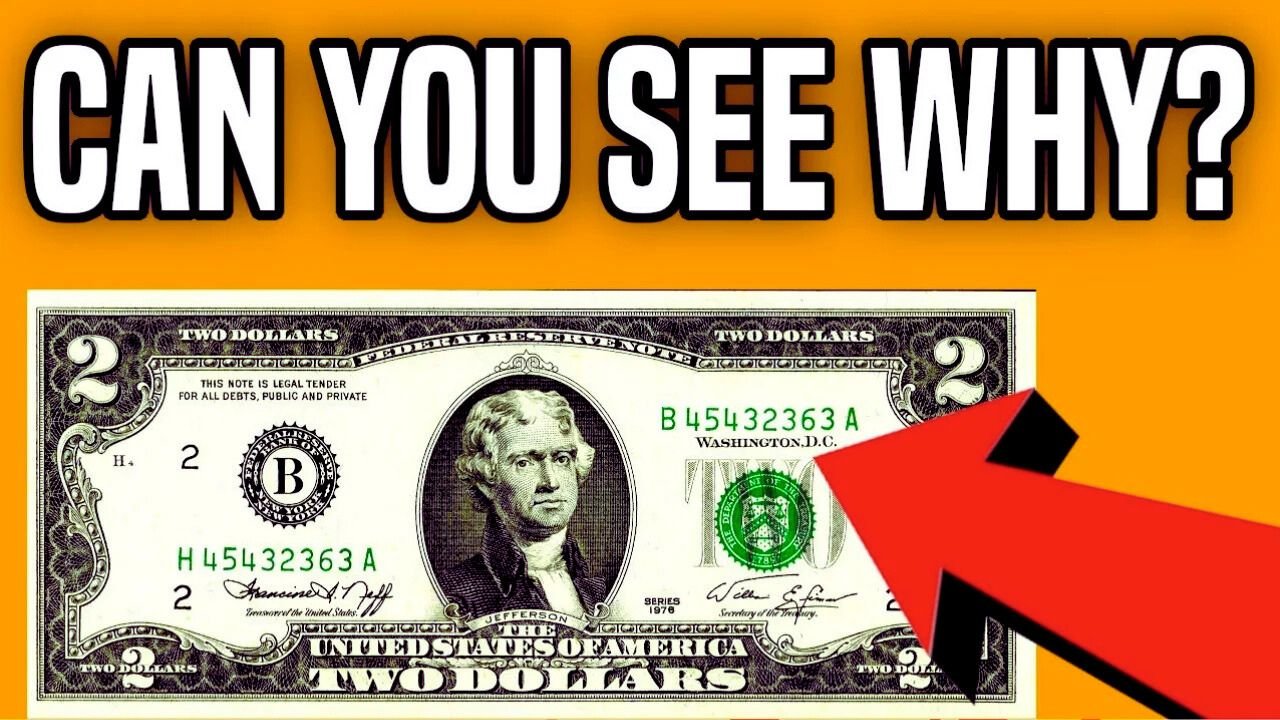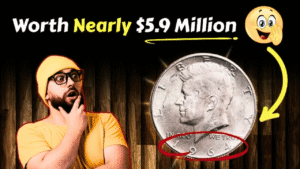Imagine finding a crumpled $2 bill in your wallet that’s worth millions. That’s exactly what happened to a gas station worker in 2025. This incredible story shows how a simple piece of paper can change a life. Keep reading to learn what made this $2 bill so valuable, how to spot rare currency, and why you should check your cash today!
An Ordinary Day Turns Into a Life-Changing Discovery
A Normal Shift at a Georgia Gas Station
In July 2025, Luis Ramirez, a 37-year-old gas station worker in rural Georgia, was counting cash after a busy morning. Among the usual bills, a $2 note caught his eye. It felt different—older, crisper, with a strange serial number.
A Hunch That Paid Off
Instead of tossing it back in the drawer, Luis saved the bill. After his shift, he researched it online. What he found shocked him: this wasn’t just pocket change—it was a rare treasure worth millions!
Why Was This $2 Bill Worth $12 Million?
The “Grand Watermelon” Note
The bill was a rare 1890 Treasury note, nicknamed the “Grand Watermelon” for its large, green zeros on the back. Only a handful of these notes exist, making them a collector’s dream.
Unique Features That Skyrocketed Its Value
Several factors made this bill extraordinary:
- Serial Number: It had a solid serial number (00000001), a rare feature collectors pay millions for.
- Condition: The note was in near-mint condition, almost unheard of for a 135-year-old bill.
- Historical Rarity: Issued in 1890, these $2 notes are scarce, with most locked away in museums or private collections.
Expert Confirmation
Luis shared photos on currency collector forums. Experts quickly identified it as authentic, estimating its auction value at $12 million. “I thought it was a prank,” Luis said. “It felt like winning the lottery!”
How to Spot a Valuable Bill in Your Wallet
Why Rare Bills Go Unnoticed
Valuable currency often hides in plain sight. Most people don’t check their cash for unique features. But with a little knowledge, you could uncover a hidden gem.
Key Features to Look For
Here’s what makes a bill valuable:
- Unusual Serial Numbers: Look for repeating digits (e.g., 11111111), ladder numbers (e.g., 12345678), or low numbers (e.g., 00000001).
- Printing Errors: Check for misaligned text, upside-down seals, or mismatched denominations.
- Old or Rare Notes: Bills from the 1800s or early 1900s, like silver certificates, are often valuable.
- Special Editions: Commemorative or limited-run notes can fetch high prices.
Tools to Help You
Use these resources to evaluate your cash:
- Online Forums: Sites like CoinTalk or Reddit’s r/currency have knowledgeable collectors.
- Professional Graders: Companies like PCGS or NGC can authenticate and appraise bills.
- Apps: Apps like “CoinSnap” let you scan bills for potential value.
Table: Common Valuable Bill Features
| Feature | Example | Potential Value |
|---|---|---|
| Solid Serial Number | 00000001 | $10,000–$1M+ |
| Ladder Serial Number | 12345678 | $1,000–$50,000 |
| Printing Error | Upside-down seal | $500–$100,000 |
| 19th-Century Note | 1890 Treasury Note | $100,000–$12M+ |
| Star Note | Serial with * (e.g., 1234*) | $50–$10,000 |
Could You Have a Million-Dollar Bill?
Everyday Places to Find Rare Bills
Rare bills can turn up anywhere:
- Change from Stores: Cashiers often overlook unusual bills.
- Old Wallets or Boxes: Check forgotten stashes at home.
- Inherited Items: Family heirlooms may include rare currency.
Tips for Checking Your Cash
- Examine Every Bill: Look closely at $1, $2, or $5 bills, as they’re often overlooked.
- Use a Magnifying Glass: Small details like serial numbers or errors are easier to spot.
- Store Safely: Keep unusual bills in a protective sleeve to preserve their condition.
- Research Online: Compare your bill to known rare notes on collector websites.
Luis’s Plans for His $12 Million Windfall
A Bright Future Ahead
Luis plans to auction the bill later in 2025. His dreams are simple but heartfelt: “I want to buy a house for my family, help my mom retire, and maybe start my own business.”
A Lesson in Paying Attention
Luis’s story shows the power of curiosity. A single glance at an odd bill turned an ordinary day into a life-changing moment.
FAQs About Rare Currency
1. How do I know if my $2 bill is valuable?
Check the serial number, condition, and year. Low or unique serial numbers, printing errors, or old dates (pre-1920) can increase value. Use online forums or professional graders for help.
2. Where can I sell a rare bill?
Auction houses like Heritage Auctions or Sotheby’s specialize in rare currency. You can also sell to collectors on eBay or through local coin shops.
3. Are all $2 bills valuable?
No, most $2 bills are worth face value. Only those with rare features like unique serial numbers, errors, or historical significance are valuable.
4. What’s the rarest U.S. bill?
The 1890 “Grand Watermelon” $1000 note is among the rarest, with some fetching over $3 million. The $2 version, like Luis’s, is also extremely rare.
5. Can I check my bill’s value online?
Yes, websites like PCGS.com, NGCcoin.com, or apps like CoinSnap can help. Upload clear photos for the best results.
Conclusion: Your Pocket Change Could Be a Fortune
Luis Ramirez’s discovery proves that life-changing treasures can hide in everyday moments. The next time you get change or find an old bill, take a closer look. That $2 bill in your wallet might just be a million-dollar ticket. Start checking your cash today—you never know what you might find!




